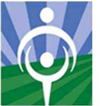
 |  |  |
| Animal movement can cause injury |
Weight of lime can strain muscles |
Dust can cause breathing problems |
 |  |  | Non-skid shoes |
Respirator as needed | Good handwashing |
Is the child comfortable around cattle?
Yes.
No. STOP! Children who are uncomfortable around cattle are more likely to be injured.
Does the feed the child will lift weigh less than 10-15% of the child's body weight?
Yes.
No. STOP! Children lifting more than 15% of their body weight are more likely to injure their backs.
Can the child easily push up to 10-15% of his or her body weight?
Yes.
No. STOP! Children who have to strain to push heavy objects are more likely to injure their backs.
Can the child steer the filled cart? For example, can the child move a grocery cart through the store?
Yes.
No. STOP! Children who can't handle the cart are more likely to be injured.
Is the broom or shovel the right size for the child?
Yes.
No. STOP! The wrong size tools can cause injury.
Can the child react quickly?
Yes.
No. STOP! Because cattle behave unpredictably, children need quick reactions to avoid injury.
Has the child been trained on lifting techniques?
Yes.
No. STOP! Lifting incorrectly can cauuse back injury.
Has the child been trained on animal behavior?
Yes.
No. STOP! Children who don't understand animal behavior are more likely to be injured.
Has an adult demonstrated feeding corn or silage on site?
Yes.
No. STOP! Children learn best when shown how to do the job at the worksite.
Has the child shown he or she can do the job safely 4 to 5 times under close supervision?
Yes.
No. CAUTION! An adult must watch constantly until the child shows he or she can do the job.
Can an adult supervise as recommended?
Yes.
No. STOP! The right level of supervision is key to preventing injuries.
What's the right amount? Here are suggestions- but remember, it depends on the child.
Age 14-15: CHECKevery few minutes at first. When the child shows he or she can do the job, LEAVE for 15 to 30 minutes.
Age 10-11: CHECK every few minutes.
Age 12-13: CHECK every few minutes at first. When the child shows he or she can do the job, LEAVE for 15 to 30 minutes.

North American Guidelines
for Children's Agricultural Tasks (NAGCAT)
For more information, visit: http://www.nagcat.org

National Children's Center for Rural and Agricultural Health and Safety Marshfield Clinic
1000 North Oak Avenue
Marshfield, WI 54449-5790
Phone: 1-800-662-6900 or 715-389-4999
Fax: 715-389-4996

National Farm Medicine Center
Marshfield Clinic
1000 North Oak Avenue
Marshfield, WI 54449-5790
Phone: 1.800.662.6900 or 715.389.4999
Fax: 715.389.3535
Disclaimer and Reproduction Information: Information in NASD does not represent NIOSH policy. Information included in NASD appears by permission of the author and/or copyright holder. More